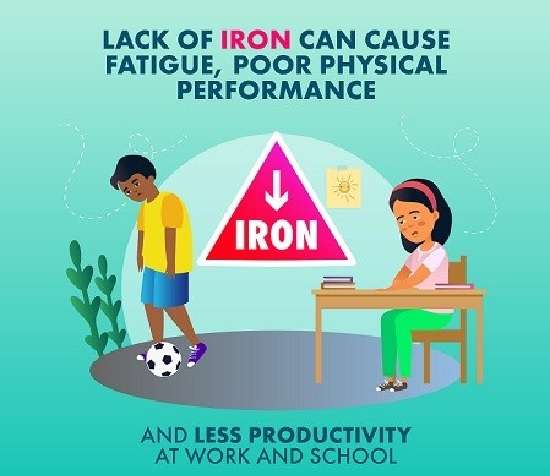
In a 2021 report, titled, “Fed to Fail? The Crisis of Children’s Diets in Early Life”, the United Nations Children’s Fund (UNICEF) ranked Nigeria as second in the global malnutrition burden – and first in Africa – with 17 million children undernourished. The report also stated that one in three children in the country is diminutive and one in 10 children is wasted.
In an apparent bid to salvage this gloomy situation and invigorate the country’s drive towards the attainment of Sustainable Development Goal (SDG) 2 – “Zero Hunger” – by 2030, Nestle’ Nigeria Plc and the Lagos State Ministry of Health (LSMH) recently embarked on different models of food fortification initiatives. The ultimate objective, according to them, is to curb the prevalence of malnutrition in Nigerian children and mothers. In this special report, TEMITOPE OBAYENDO investigates the malnutrition scourge and the impacts of LSMH and Nestle’s interventions.
Titi, a seven-year-old child, had been expected to grow healthily like her mates born in the same Likosi Community of Ogun State, but that was not to be. Rather, she suffered from repeated infections and stunted growth. Worse still, she continued to show signs of mental retardation, making it difficult for her parents to enroll her for formal education. Thus, while Titi’s age mates within the community are in their second or third year in elementary school, she is still struggling to put a meaningful sentence together.
Titi’s condition had thrown her artisan parents into dejection for the past 6 years, as they assumed that she was a sickle cell carrier. A neighbour, however, advised them to take her to a nearby hospital. When they did, she was diagnosed of marasmus, a form of malnutrition, and started receiving treatment immediately.
Now, Mr and Mrs Joel Kolade, Titi’s parents, who have since regretted their error in underfeeding her, due to their low income level, have pledged to improve in the family’s feeding habit, as well as to intentionally supplement their food with essential micronutrients.
Forms of malnutrition
Marasmus is a form of malnutrition that occurs when the intake of nutrients and energy is too low for a person’s needs. It is a severe form of protein-energy malnutrition that leads to wasting, or the loss of body fat and muscle. Experts opine that a child with marasmus may not grow as children usually do. It is established that marasmus also affects adults, but it most often affects young children in developing countries.
Generally, malnutrition refers to the poor intake of food which may manifest as either excess consumption of food, known as overnutrition; or inadequate nutrition consumption, referred to as undernutrition, like that of Titi. According to the World Health Organisation (WHO) malnutrition is a global challenge, with serious and far-reaching developmental, economic, social, and medical impacts on individuals and their families, communities and countries.
A Nutrition Officer with the Lagos State Ministry of Health, Mrs Olubunmi Ibrahim, described malnutrition as a public health disease condition of great concern. “It is a triple burden disease condition with over-nutrition, undernutrition and micronutrient deficiencies, popularly called “hidden hunger”.
Anaemia is another global public health problem associated with nutritional deficiencies that particularly affects young children and pregnant women.
Figures of malnourished children and women
WHO estimates that 42 per cent of children less than five years of age and 40 per cent of pregnant women worldwide are anaemic. It is so worrisome that the apex health institution further estimates that one-third of all women of reproductive age are anaemic. It identified causes of anaemia to include iron deficiency, shortage of vitamins B12 and A, as well as infectious diseases.
With the global burden of malnutrition from the WHO 2021 Report indicating about 45 per cent of mortality in under five years children; stunting in 149 million children under 5; wasting (too thin for height) in 45 million; and overweight or obesity in 38.9 million, the situation is alarming. The health condition also accounts for 1.9 billion overweight and 462 million underweight in adults.
Food fortification and bio-fortification as panacea to malnutrition
In tackling the burden of malnutrition, experts are advocating bio-fortification and food fortification as measures for enabling everyone across the globe to enjoy their right to adequate nutrition. Bio-fortification is a breeding process of specific grains with the aim of enhancing both their mineral density and bioavailability. Food fortification is the practice of adding vitamins and minerals to commonly consumed foods during processing to increase their nutritional value.
Canvassing the need for food fortification, UNICEF Executive Director, Henrietta Fore, at the Second Global Summit on Food Fortification, said: “We estimate that at least one in two of the world’s children suffers from hidden hunger – deficiencies in vitamins and other essential nutrients. Large scale fortification and bio-fortification can help us address this issue.”
Buttressing same idea at the conference, Director of Nutrition at the Bill & Melinda Gates Foundation, Andreas Bluethner, called for worldwide solidarity on food fortification: “The worldwide COVID crisis puts millions of people additionally at risk of poverty and malnutrition. We need governments, donors and private sector to partner for resilient nutrition programmes, such as staple foods fortified with essential nutrients. Adequate nutrition is a human right and an outstanding investment in a nation’s health, educational opportunities and productivity at marginal cost.”
The CEO of HarvestPlus, Arun Baral, in his remarks at the summit, as published on GAIN’s website, also emphasised the the adoption of food and bio-fortification with a call to action. “Food fortification and crop bio-fortification are complementary interventions that can ensure all people can get the essential micronutrients they need for good nutrition and health. It is time to rapidly scale them up to help achieve the Sustainable Development Goals,” he said.
Food fortification: Lagos State Ministry of Health’s model
It comes as no surprise that the Lagos State Ministry of Health (LSMH) has embraced food fortification in addressing the “hidden hunger” burden in the state, through the introduction of micro-nutrient powders (MNPs) as supplement to be added to infants and young children’s meals. It is a routine service designed as an intervention to prevent and treat malnutrition in children of six to nine months.
In an exclusive interview with Mrs Olubunmi Ibrahim, the state nutrition officer, she explained the objective of the state in embarking on the project. “MNPs are products designed to address micronutrient deficiencies, including anaemia, by improving the quality of children’s diets, to prevent vitamins and minerals deficiencies where access to diverse nutritious foods is limited.”
She remarked that while the programme recorded a huge success, as the MNPs were widely accepted by children as reported by their mothers, shortage in supply was a limitation due to the large population of the state.
In a peer reviewed report titled, “Evaluation of MNPs Distribution through Maternal Neonatal and Child Health Weeks in Nigeria: Process Evaluation of Feasibility and Use – A Case Study of Four Local Governments in Benue State”, it was found that MNPs coverage was low, but consistency was typically achieved with other services delivered through Maternal, Neonatal And Child Health Week (MNCHW) in Benue.
“Among caregivers who received MNPs, acceptance and use among targeted children was high. While some weaknesses in knowledge and delivery of MNP by health workers were observed, health system strengthening and more extensive social mobilisation would be key to achieving higher coverage with MNPs and other health services provided through MNCHW”, the document stated.
While the LSMH’s food fortification project is a laudable one that should be sustained, the Nestle’s example of tackling micronutrient deficiencies and other forms of malnutrition provides a more in-depth insight for stakeholders in the health and nutrition industries to emulate.
Food fortification: The Nestle’s success story
In an exclusive interview with Nestle’s Nutrition Institute Manager for Central West Africa Region, Dr Kanalio Yvonne Olaloku, she revealed how the company has leveraged food fortification and intensified awareness creation on the importance of iron, for the benefits of Nigerians and Africans, including those in the low income level.
She said Nestle embarked on the “Live Strong with Iron” campaign in 2021 to sensitise Nigerians about iron deficiency, which is the largest micronutrient deficiency globally, accompanied by low awareness which predisposes people to iron deficiency anaemia.
According to her: “Nestle’s ‘Live Strong with Iron’ campaign is ongoing with the different brand categories. The awareness is embedded in the different brands of products containing iron such as Milo, Golden Morn, etc.
“Over 95 per cent of our products are fortified to provide at least 15 per cent of our daily needs in one serving. Each product is fortified with at least one of the big four nutrient deficiencies: Iron, Vitamin A, iodine, and zinc”.
Asked about the affordability of these fortified food products to the poor families who live on less than two dollars a day in Nigeria, she said Nestle’s products are also packaged in small size sachets to ensure affordability for everyone, adding that a sachet and contains at least 15 per cent of the required daily allowance of iron to prevent iron deficiency.
Challenge of affordability
While some Nigerians interviewed on the affordability of Nestle’s Golden Morn and Milo said they might not be able to purchase the products on a regular basis for their families, Olaloku remarked that the goal of the campaign is not for people to drink Milo twice a day or every single day but “to ensure that people are consuming all round foods rich in iron (Nestle products inclusive)”.
She continued: “The main objective of the campaign really is to increase awareness amongst employees, distributors, stakeholders and consumers so that there is a call to action across the communities.”
Aside from fortified processed foods, the nutrition expert mentioned other iron-rich natural foods that people can eat, such as dark green leaves, egusi, beans, nuts, meats, fish, and chicken. She urged Nigerians to endeavour to eat more of these local foods, stressing that they provide other essential nutrients for the body such as folate, calcium, fibre, and protein.










